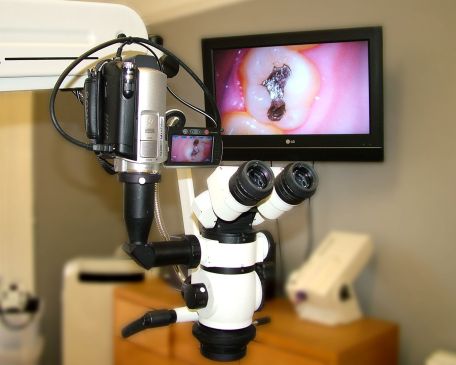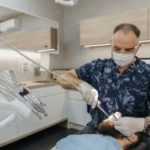Dental Microscopy: All You Need To Know

A good set of teeth is very important to endure an entire life and this is possible only when one takes care of their teeth with frequent checkups and treatment. Hence, dentistry is one of the most popular medical practices and there is a dental clinic in every corner. There are many dental practitioners who use a dental microscope to bring about convenience and accuracy in their practice. Dental microscopes Dental microscopy has a wide array of advantages to offer to dental practitioners. If you are a dentist who is considering buying a dental microscope, here is a list of things you need to consider before making the investment. The article will list out the most beneficial and the latest features dental microscopes of today come with and how they can be put to good use for efficiency and convenience. Read on.
1. Light Source
Operating microscopes are compound microscopes that make use of the light available to focus and reflect back the thing that is measured. Lighting plays a very important role in determining the quality of observation and assessment made. It is very important that the teeth being observed are well illuminated to find hidden decay and other problems. Dental microscopy has evolved over the time and these days many manufacturers provide a LED illuminating source along with the microscope. LED bulbs provide pure white light that is not to bright nor too harsh with heat emission. LED bulbs have a longer life period and run up to a ridiculous 60,000 hours. In addition, they are also energy efficient and cost less.
2. Ergonomics
One more thing that you need to focus in dental microscopy is the ergonomics and product design of the dental microscope you are planning to buy. Dental checkups involve a lot of leaning in and bending down which will strain your back and neck. Since dentists do it in a regular basis, considering convenience and comfort is very important. The latest dental microscopes come with flexible, mobile handles that enable the dentist to stand at one place, do minimum physical work and still make the best possible observations. These handles can be adjusted to height and mobility to suit each patient’s physical dimensions.
3. Mount
Apart from ergonomics, mounting is one more thing that you need to consider in dental microscopy while deciding how user friendly the microscope is. Dental microscopes come in a wide array of mounts… wall mounts, floor mounts, ceiling mounts and more. Choose a mount that helps you make better observations, avoid physical strain, easy to install, cost effective and building friendly. If you running your clinic in a place that’s for rent or lease, you might have to consult the building owner regarding the mounting. This will help you make the necessary arrangements for the installation.
4. Digital SLR
Using tiny digital SLRs, video cameras and small digital screens is a new trend in dental microscopy. These resources will help in reaching those corners of mouth that can’t be reached or observed. The camera is designed such that it can go inside the mouth, record the observation and simultaneously display it on a portable screen so that the dentist gets a clear overview of the condition. Since it is documented, the dentist can use the same recordings later and offer better treatment.
5. Magnification
Every compound microscope will have two lenses namely eyepiece lens and objective lens, that together magnify the observed image and reflect the same on to the eyepiece. Lenses ranging from 300mm to 400mm will be available and you need to choose the magnification that your dental practice requires. Dental microscopy doesn’t entertain lenses that that are less than 300mm. In addition, one should note that the eyepiece magnifies the already magnified objected by 10 times. Hence, while buying the lenses make sure that you buy the right magnification.
6. Optical System
Optical system is one more thing that you need to consider in dental microscopy as it is required to produce superior resolution and artifact-free images for excellent clarity during dental surgeries. Since precision is of concern, these optical systems must be reflection-free and durable optics.







